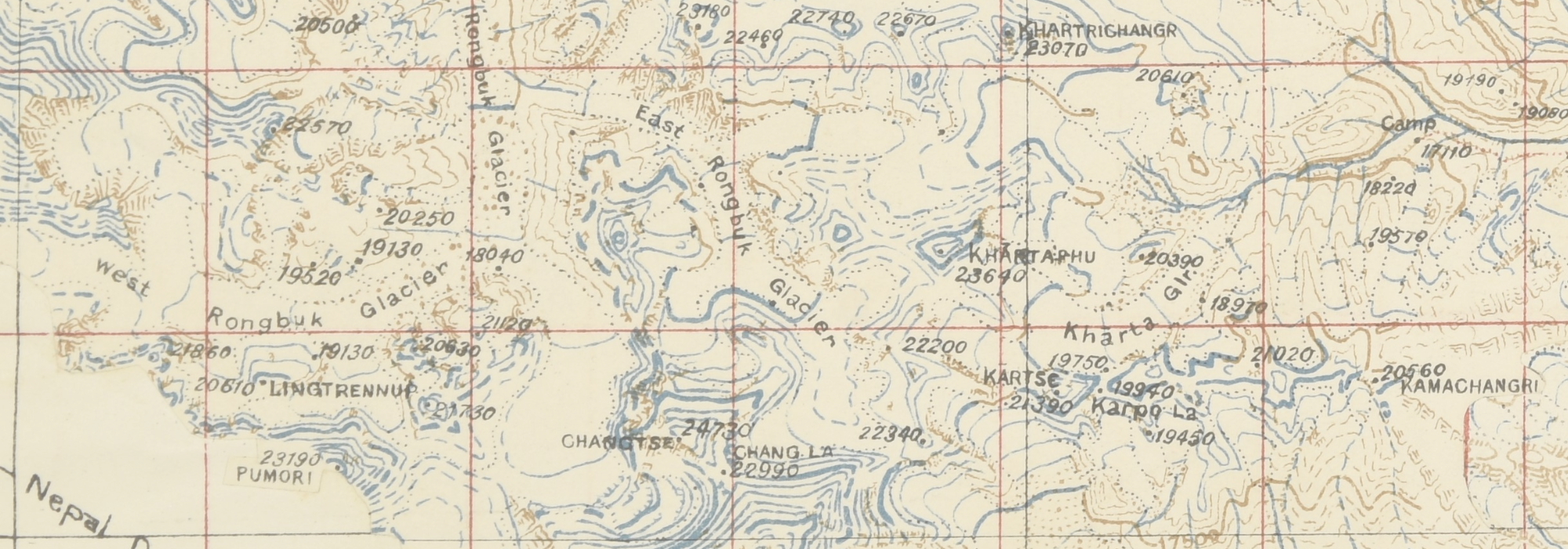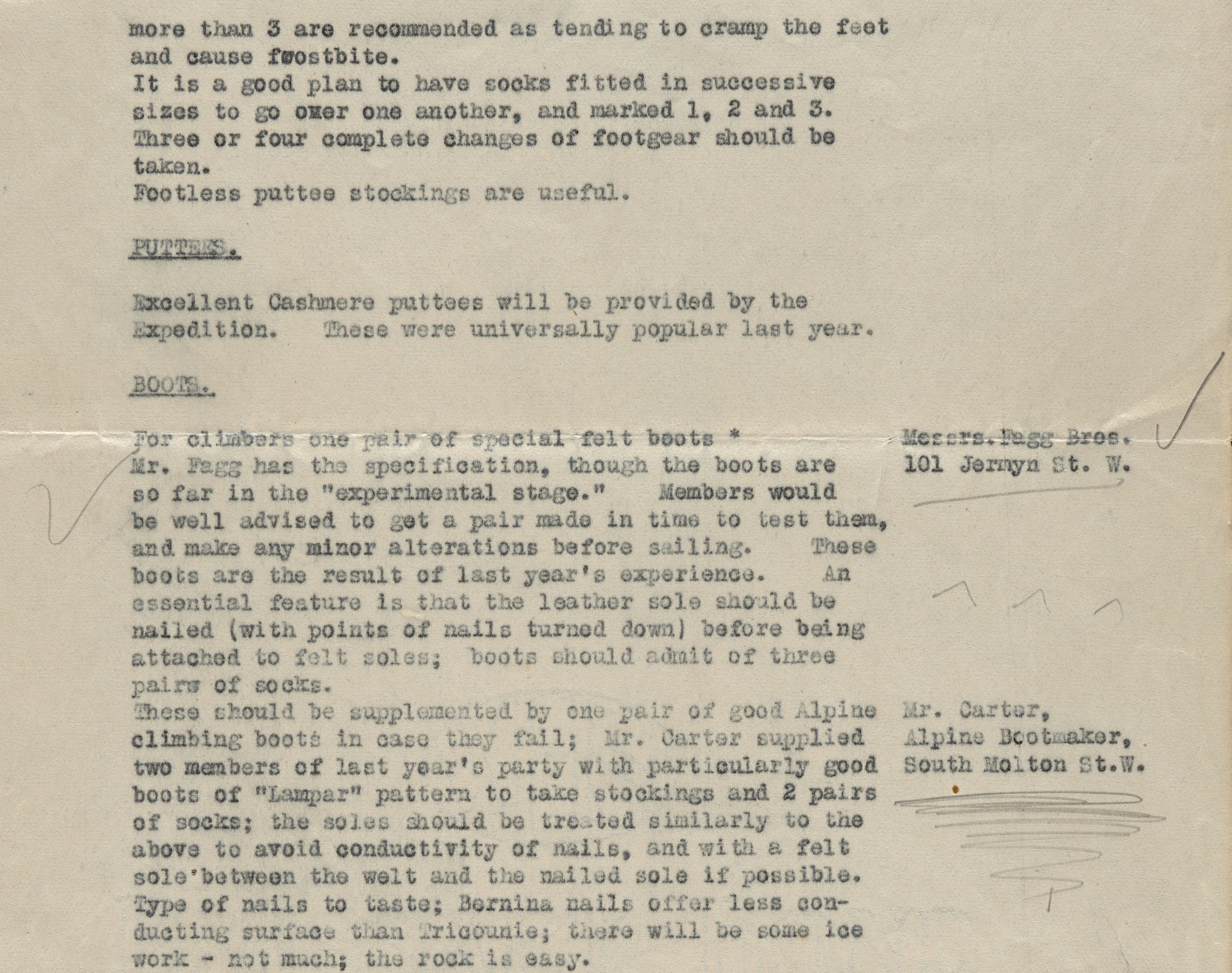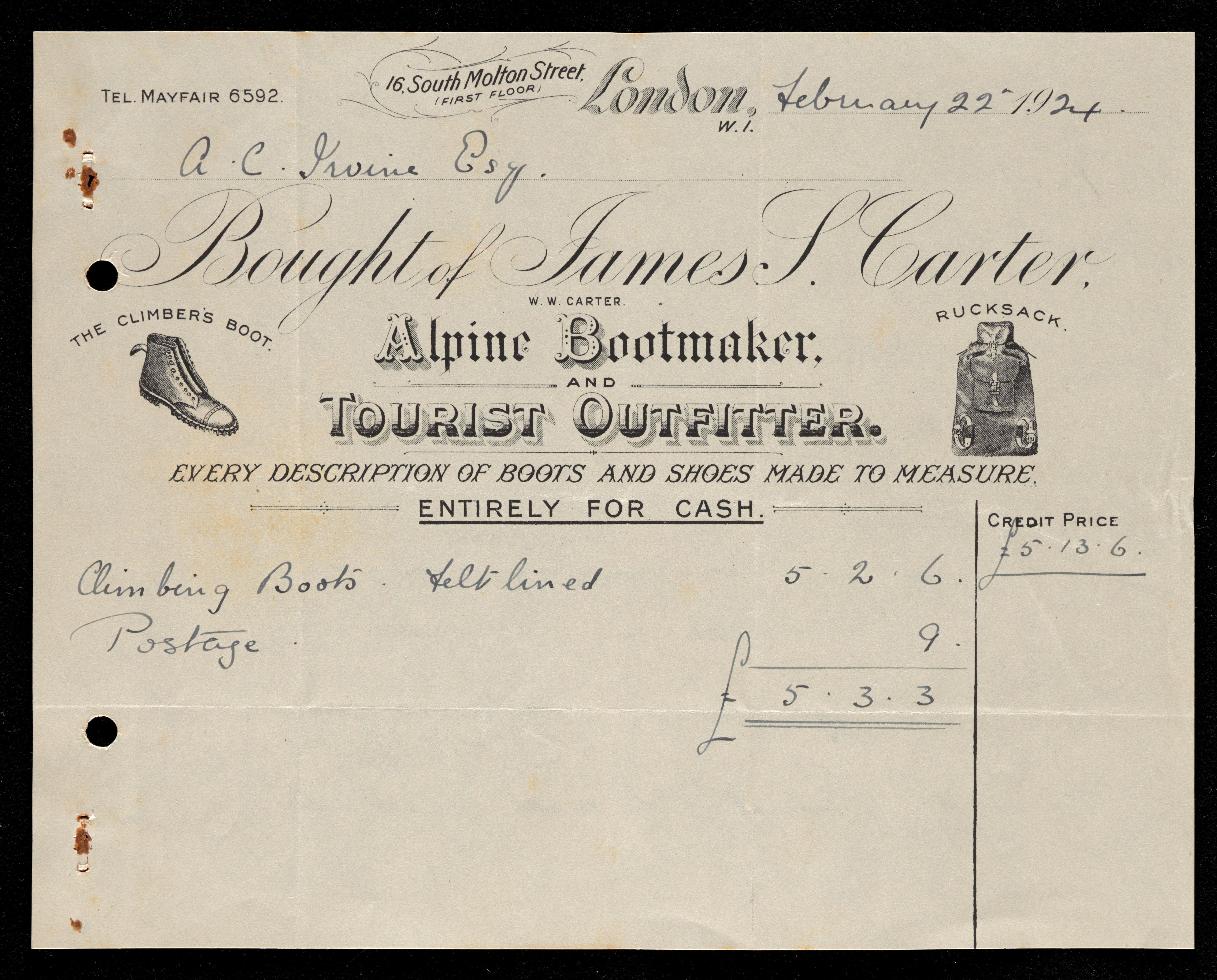
Difficult days at Camp III
22nd May 1924

Sock and Boot specifications for climbers on the Equipment List stress the importance of keeping feet warm and not cramped.
The day after his foray up to the North Col Sandy remained in Camp III mending the broken primus stoves. Late that afternoon he learned from Norton that six oxygen appliances would be required early the following morning. They would be taken to Camp IV in preparation for a summit attempt on or around 28 May. This was news indeed for Sandy and he stayed up until midnight working away at the sets, desperate to have them ready and fully functioning. The following morning he was up early again working feverishly until Odell and Geoffrey Bruce left Camp III. The late night, early morning and extreme cold had taken their toll on Sandy and he was ‘feeling seedy’.
One of the most unpleasant aspects of life at Camp III was the cold. Everybody complained of it in their letters and diaries. Norton described it as a truly horrid spot. It was sited on the moraine on the edge of the East Rongbuk glacier so that the ground underfoot was of rough stones. In 1922 these stones had been warmed by the sun and there was a gentle trickle of drinking water available. In 1924 the stones were always covered in fresh snow and deadeningly cold. The night of 22 May was the coldest night recorded to date at Camp III, —24°F or —30°C. Sandy’s feet were so uncomfortably cold that he had to get up four times in the night to attempt to warm them, in vain. The low temperatures they were experiencing were nothing in comparison to what the Arctic and Antarctic explorers had had to put up with. The very great difference, however, is altitude. The body has much less strength to fight it, the lack of oxygen greatly exacerbates the feeling of cold and the risk of frostbite is very real.

Invoice for Sandy's Boots